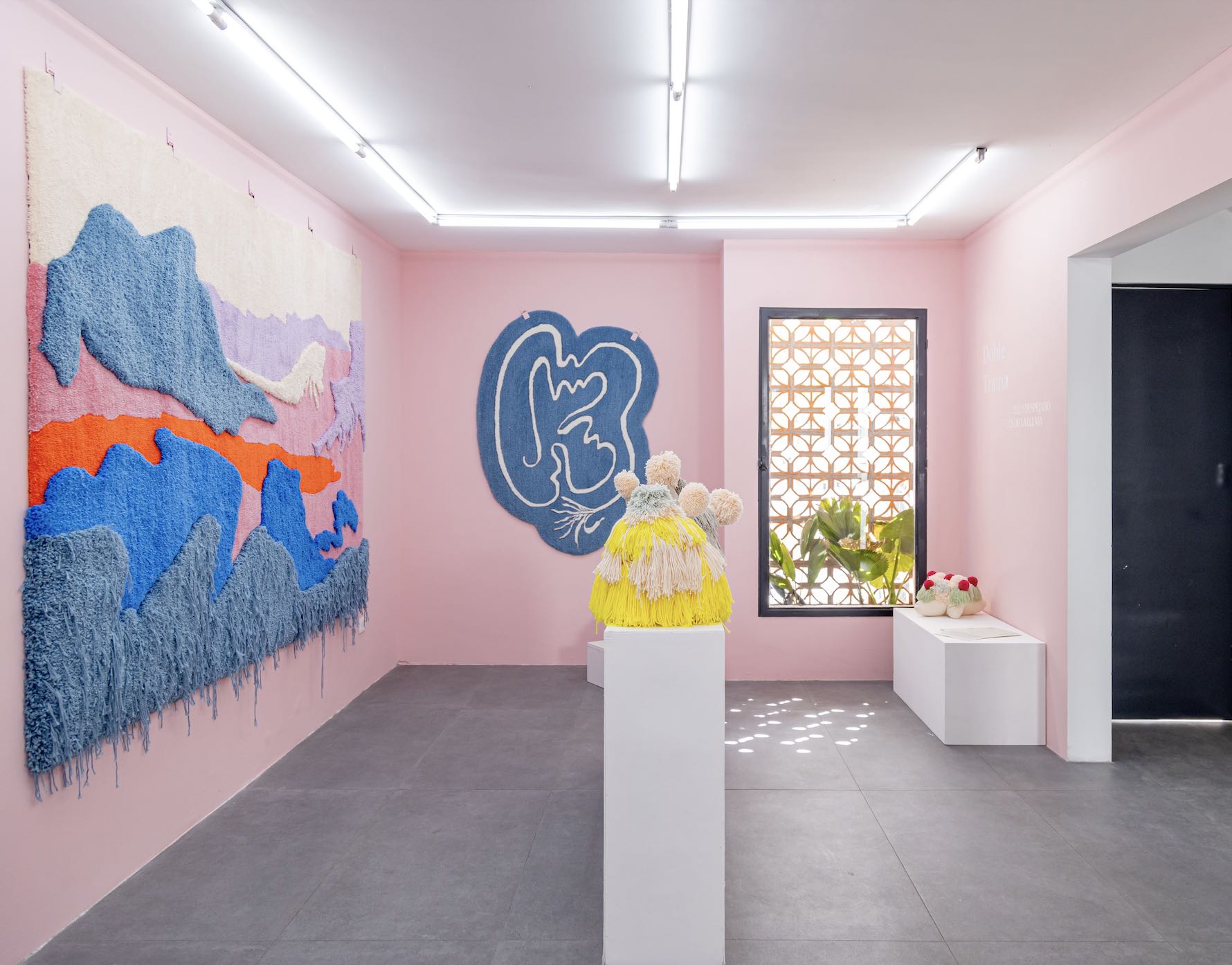
Essay
Under the Clear Sky after the Rain: On Recent Work by Doble Trama
by Christian Camacho
At Castilla / Klyuyeva
Reading time
4 min
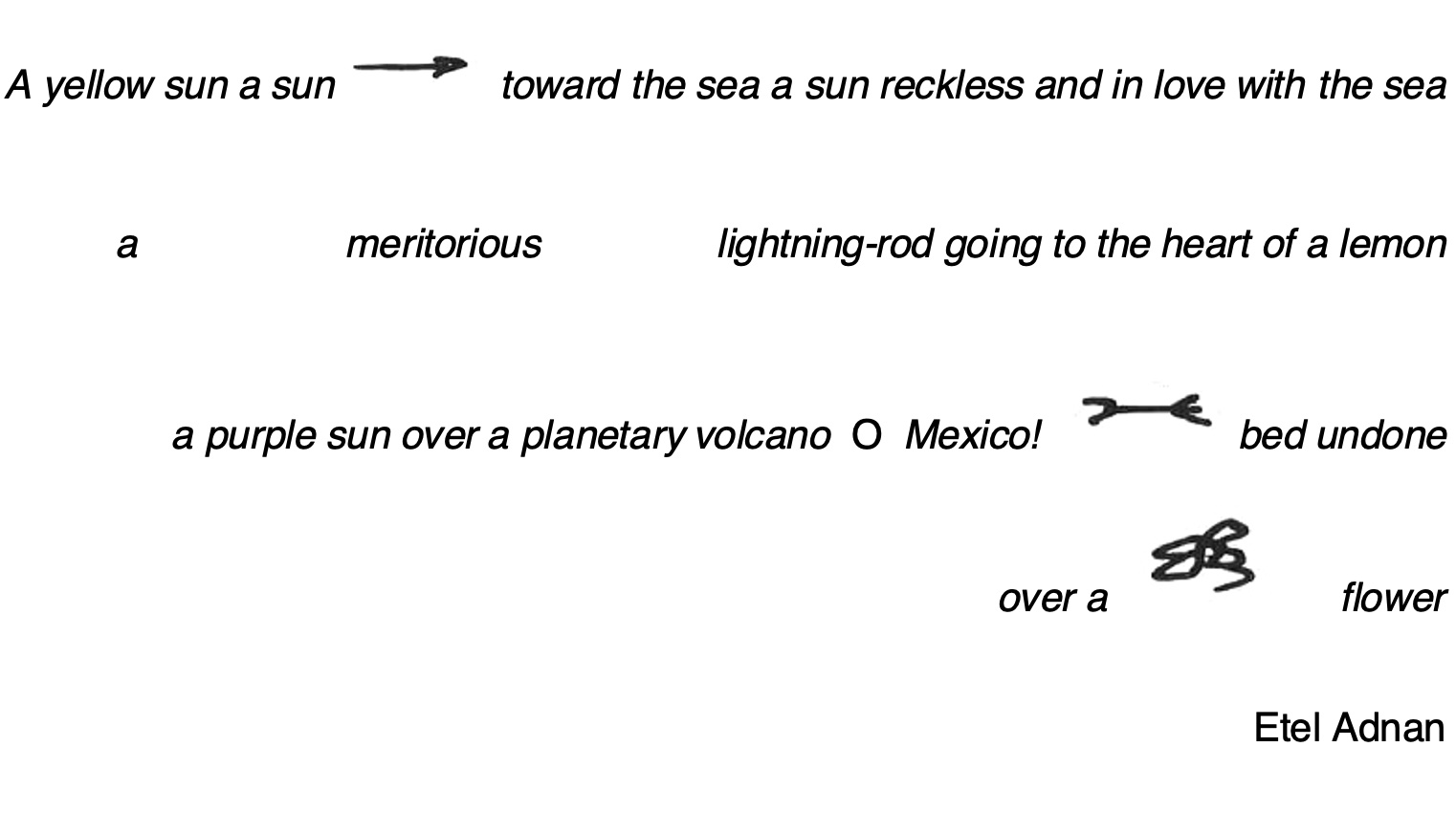
Saying Under the Clear Sky after the Rain takes on many different paces in the mind. I am thinking of a feeling of relief, similar to the memory of an outside scent or to reflections on the wet soil. Or perhaps I am in the refuge of the interior, thinking of a lighter sky, deep against the blue of the atmosphere or crossed by a cool breath from a balcony. In fact, this condescending idea, which also gives the exhibition its title, alludes to a particular object. Or to a series of objects: pieces invaluable to the history of art and ceramics, such as the famous Ru ware of the Song Dynasty, produced—according to Chinese academic Chen Wanli—very briefly between the years 1086 and 1106 of our era in small “bread-bun” kilns (饅頭). Their shapes, at once delicate and simple, are covered by a spectral pale blue glaze, often finely cracked, capable of being associated simultaneously with the fracture of ice, the skin of fish, and, in effect, with a particular grayish blue of the post-flood sky.
I believe that Doble Trama, the artistic duo consisting of Ruth Aragón (Monterrey, 1993) and Alejandro “Luperca” Morales (Ciudad Juárez, 1990), aims to take this path: not to reveal a devotion to this extremely valuable ceramic, but rather to suggest a precise link with an artistic economy that encompasses both the synthesis of the phenomena of the natural world and its implications within methods of artisanal production.
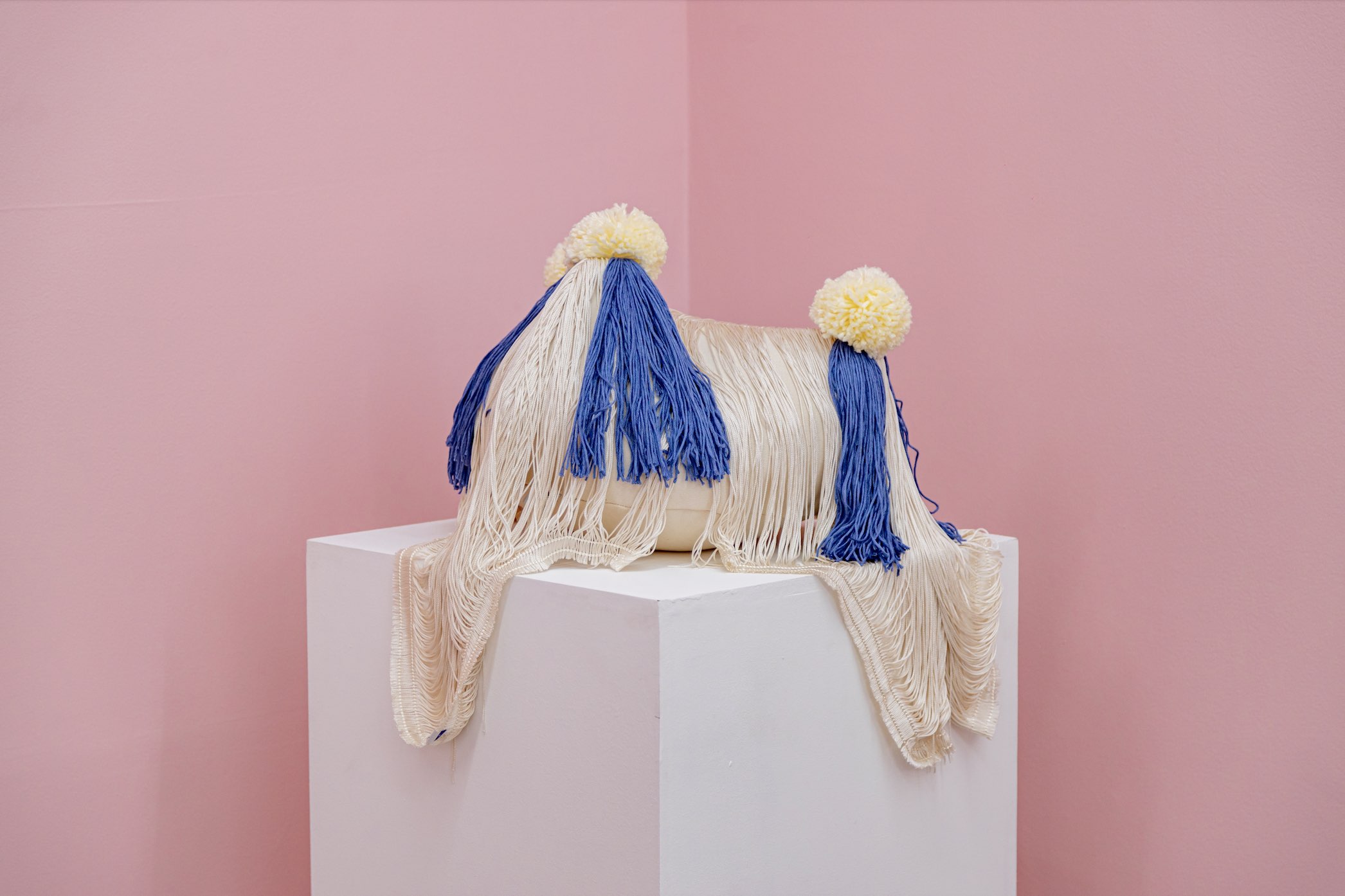
The pieces gathered here have been made via a textile process known as “tufting,” from the word “tuft.” A technique in which yarn is inserted in an adjacent and regular manner into a base fabric with the aim of generating different ranges of areas and textures. Although its principles are very ancient, this process is actually closer to the manufacture of carpets and rugs in modern industry, in which various possibilities of automation have also given way to new avenues of design. This condition is in turn intertwined with a current way of understanding the preparation of a sign for the material used: for each knitted stitch, a corresponding coordinate in the digital vector plane that precedes it. What does this imply for the work?
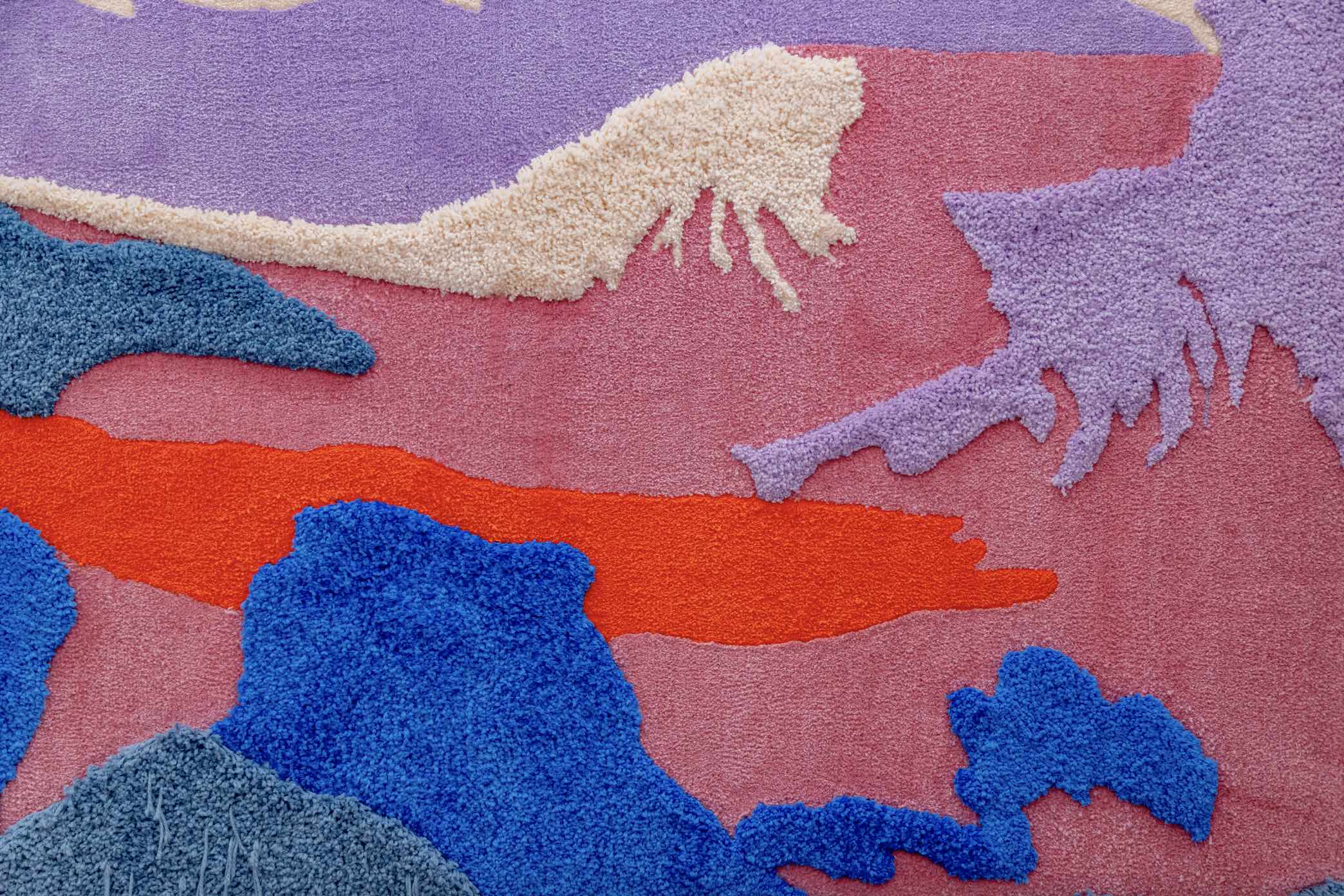
We must therefore speak of Doble Trama’s process, about the symmetrical path between the manual elaboration of a fabric and the preparation of a vectorial instrument that will serve as both a guide and as a blank canvas: a receiver of different gestures that will be interwoven with flights of drawing as well as with the digital repertoire accompanying the imagination of the environment, natural or constructed, from something similar to a render.
The landscape forms that inhabit Doble Trama’s work have been understood from a place whose correspondence is unexpected: the warmth of a profoundly synthetic eye, concordant with what is and is not there at the same time—bushes of information, imaginary vegetation, animate and inanimate forms. A small population of stems, valleys, and textures for the gaze and for a certain type of proverbial footstep-touch that runs through it all with curiosity.
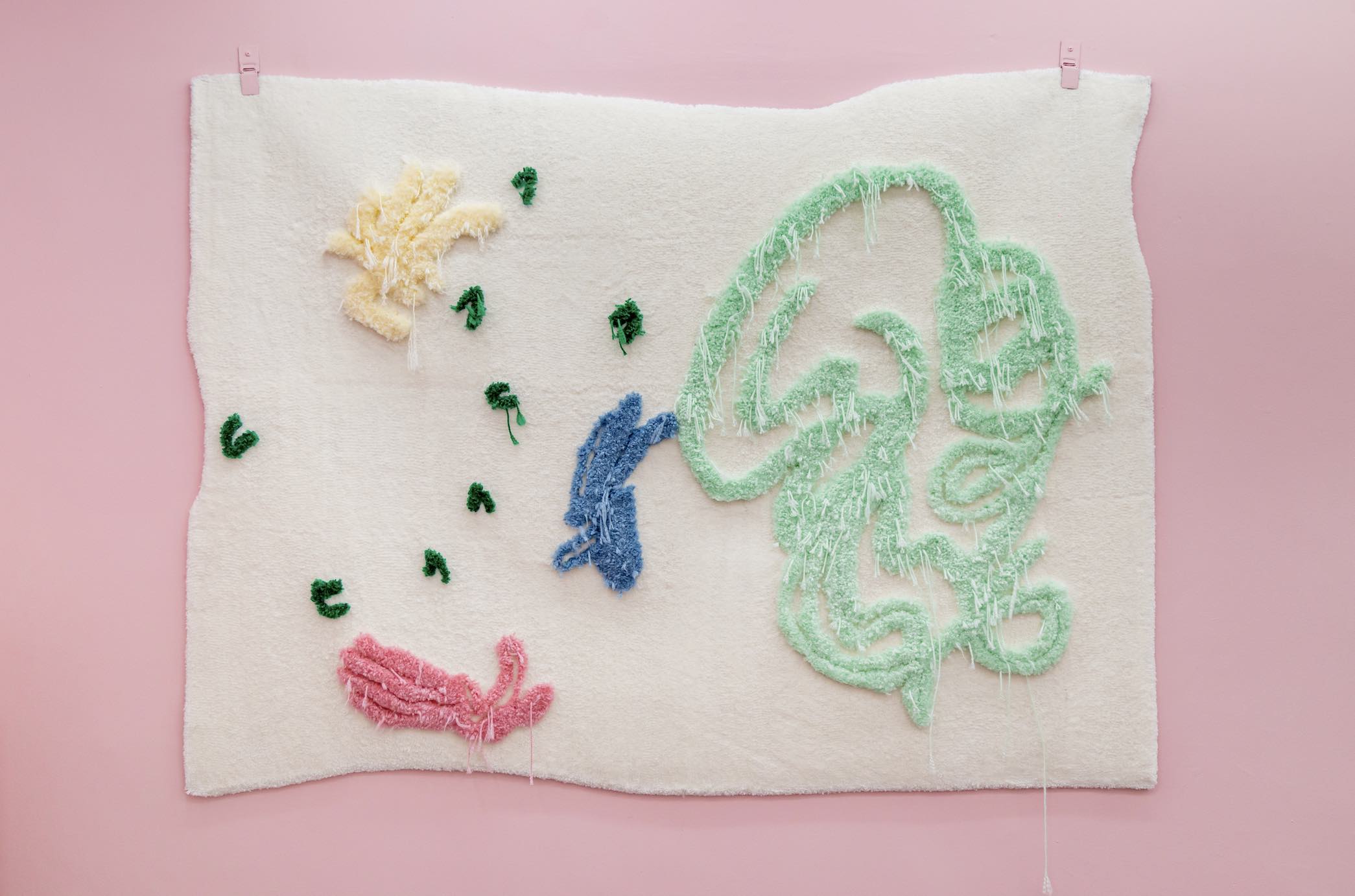
This synthetic ecology animates these volumes: it is impossible to consider them as totally still, totally mute. A very particular type of movement, very similar to the pause, is here present. Perhaps the echo of the hands—those that have given extension and shape to these pieces—mobilizes them after they are finished, just as occurs upon recognizing the warm value of artisanal signs. Whatever might be the origin of this reserved energy, its presence is yet another trait that ultimately acts as a welcome: our introduction to the recent repertoire of this dialogue that Ruth Aragón and Alejandro “Luperca” Morales sustain via textiles, their relations to the environment, and the calculations of an imagination whose affirmation is likewise affective.
Translated to English by Byron Davies
Published on April 14 2022